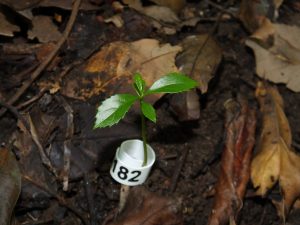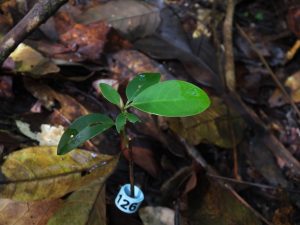Plants get to new places using wind, water or animals. Seed dispersal is crucial for plants to maintain their populations.
If the going gets tough, trees cannot up and move. The only time they move is even before they are born, when they are seeds. The movement of seeds away from their parent tree is called dispersal. How a tree disperses its seeds has made for some fascinating ecological research.
Seeds can move with wind, water, gravity or animals. In some forests, up to 70% of plant species need animals to move their seeds. To understand how this works, scientists study seed dispersal. Who eats the fruit of which tree species, whether they destroy the seed or carry them away intact (called dispersal), where they disperse seeds, and whether dispersed seeds do better than those near parent trees. From the tiniest insects to mega-animals like elephants have been co-opted by plants to carry their seeds. Fishes, bats, birds, even reptiles disperse seeds.

Many plant species cast a wide net to attract animals. Some plant species have as many as twenty different dispersers. A few species can be, however, can only be eaten by one or few animals. Generally, the larger the seed, the fewer animals that eat it. Overall though, ecosystems support complex webs of plants and dispersers. They interact with each other to create networks, not unlike the networks we have with friends in real or virtual spaces.
Why does it matter for the seed to move away? Seeds that move farther away from the parent can escape the organisms that prey on seeds. Rodents, insects and fungi often collect or forage close to parent trees because there is a bounty of seeds there. When seeds move farther away, they can evade the roving rodent or insect and the fungi that spread fast where seeds accumulate. There are also lots of studies on what eats dispersed seeds when near and far from the parent tree. We’ll also know more about this when reading about seedlings.
Not all animals contribute equally to dispersal. Some large animals carry may more species, many more seeds and farther away from a parent tree. Seeds can be carried anywhere from a few feet to a few hundred kilometers away depending on who eats it. Scientists think that animals that move seeds far may play very important role in maintaining gene flow between distant populations.
Ecosystems today face massive changes due to human activities—what scientists call global change. Alongside a changing climate, natural habitats are being broken into smaller and smaller pieces to make way for roads, mines, dams or settlements. Even where habitats retain their size, they often degrade in quality with human use, for example with selective logging. These changes affect the interactions that plants have with animals that disperse or eat their seeds.

Global change can reorganize plant-disperser networks. Some interactions may be lost altogether. There are some indications that losing dispersers can severely hit regeneration—the process by which older plants produce younger plants (seedlings) that continue the population. Sometimes the loss of one of few animal dispersers can be made up by other animals. Sometimes that is not possible and the plant species may go extinct. Scientists think that this may be especially true for plants that make large seeds. There is some evidence for this from past history—when megafauna (large animals) died out in the Pleistocene, the plants whose seeds they dispersed either went extinct or shrunk in the space across which they were found. This is called range contraction.
Range contraction may be happening today also. Many dispersers have been lost with excessive hunting. Some dispersers, especially the large-sized ones, also blink out of forest fragments. The habitat between fragments can be unsuitable for dispersers to move. Without dispersers being able to move, plants may not be able to colonize new sites. This can be quite a problem with climate change. Because plants may not be able to move to sites with more conducive climate.